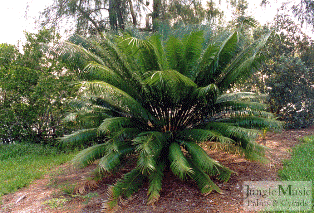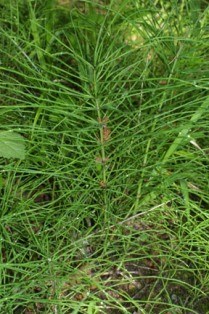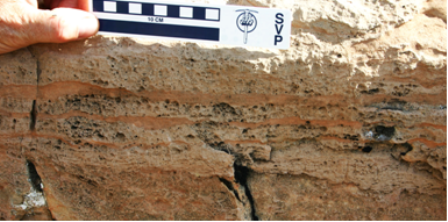|
Although this area was a desert, the oases scattered among the dunes allowed some plants to survive. It is extremely difficult to preserve plants in a desert environment. To preserve something as a fossil, it must be buried as soon as possible. In a desert, the heat, sand, and wind tend to destroy plant remains so soon after they die that there is no time to bury them. Cycads Two types of plants have been identified in Glen Canyon fossils. The first is a cycad. Cycads look like short, fat palm trees or large ferns, although they are not closely related to either of those groups.

Phil Bergman 
National Park Service 
© 2004 Steven J. Baskauf, Horsetail The other plant paleontologists have identified is a sphenophyte, or horsetail. These plants usually grow in wet areas, so if they were present in the desert, they were probably clustered in the wetter interdune areas. Horsetails consist of a single stem with needle-like leaves at regular intervals. At the joints where the needles are placed, there is usually a rigid ring in the stem. 
National Park Service 
National Park Service Other Plant-Like Life Paleontologists have also found laminated (or layered) carbonates. These are formed when sediment sticks to a mat of cyanobacteria. (These tiny organisms are not plants, although they are sometimes inaccurately referred to as "blue-green algae.") Layers like these are described as stromatolitic, and they only form in standing water. In one place at least, then, there was actually water above the surface. |
Last updated: February 24, 2015
